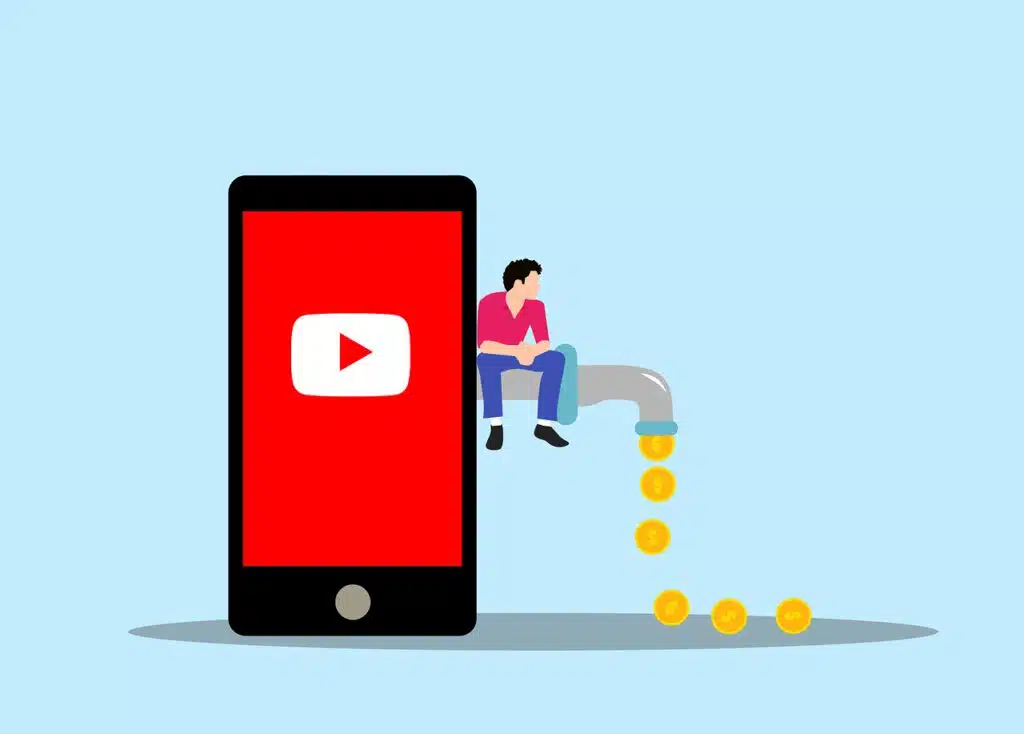Understanding YouTube Monetization

If you're a YouTuber looking to earn money from your videos, it's important to understand how YouTube monetization works and the eligibility requirements you need to meet.
How YouTube Monetization Works
Advertising is the most common way for creators to earn money on YouTube. Revenue is generated when viewers watch ads that are running on videos. This revenue is shared between YouTube and the creator (YouTube). The more ads that viewers watch, the higher the potential for earnings.
Eligibility for Monetization
To be eligible for YouTube monetization, you need to meet certain criteria. The eligibility requirements for the YouTube Partner Program (YPP) include:
- 1,000 subscribers: You must have at least 1,000 subscribers on your YouTube channel.
- 4,000 watch hours: Your channel must have accumulated 4,000 watch hours in the past 12 months.
These requirements are in place to ensure that creators have an engaged audience before they can start earning money from their content. It also helps maintain a level of quality and trust within the YouTube community. For more information on eligibility requirements, you can refer to the YouTube Support page.
It's important to note that being eligible for monetization is a privilege and is only rewarded to trusted creators. YouTube's policies prohibit monetization on channels that have violated the Community Guidelines or Terms of Service. So, make sure to adhere to these guidelines to maintain your eligibility and continue earning money from your videos (YouTube Support).
Another factor to consider is the location of your audience. The location can impact your YouTube monetization, as certain countries may have specific requirements or restrictions for ads to be shown. It's essential to familiarize yourself with the guidelines and policies specific to your audience's location to ensure compliance and maximize your monetization potential (YouTube Support).
Understanding how YouTube monetization works and meeting the eligibility requirements are the first steps toward earning money from your videos. In the next sections, we'll explore the various factors that can impact your YouTube monetization and provide tips for maximizing your earnings. Keep reading to discover how you can make the most of your YouTube channel's revenue potential.
Factors Impacting YouTube Monetization

When it comes to YouTube monetization, there are several factors that can influence the revenue you earn from your channel. Understanding these factors is essential for maximizing your earnings and making informed decisions about your content. Let's explore some of the key factors impacting YouTube monetization.
Ad Format and Placement
The format and placement of ads on your videos can have a significant impact on your CPM (cost per thousand ad impressions). Ads placed at the start of a video or non-skippable ads tend to have higher CPMs compared to mid-roll or overlay ads. Additionally, the location and size of the ad placement can affect viewer engagement and ultimately impact your ad revenue. For more tips on increasing your YouTube ad revenue, check out our article on tips for increasing YouTube ad revenue.
Alternate Sources of Revenue
While advertising is the primary source of revenue on YouTube, the platform has introduced additional ways for creators to earn money. These include channel memberships, super chat and super stickers, YouTube shopping, and subscriptions. Each of these features provides an opportunity to generate additional income beyond traditional advertising. To learn more about these alternate sources of revenue and how they can contribute to your earnings, visit our article on maximizing YouTube monetization.
Eligibility Requirements and Policies
To be eligible for monetization on YouTube, creators must meet certain requirements. This includes having at least 1,000 subscribers and 4,000 watch hours in the past 12 months. These eligibility requirements ensure that creators have built a substantial audience before they can start monetizing their content. It's important to stay up-to-date with the YouTube Partner Program policies to ensure compliance and maintain your monetization status.
Content Guidelines and Demonetization
YouTube has specific content guidelines that determine whether a video is eligible for monetization. It's crucial to create content that aligns with these guidelines to maintain monetization eligibility. Videos that violate the Community Guidelines or Terms of Service may be demonetized. This can happen if your video includes controversial or sensitive topics, violence, hate speech, or harmful acts. To understand more about content guidelines and the impact of demonetization, refer to our article on analyzing YouTube income metrics.
Impact of Audience Location
The location of your audience can also impact your YouTube monetization. Advertisers may have specific requirements or restrictions for ads to be shown in certain countries. This means that the revenue potential for your videos can vary depending on the geographic distribution of your audience. Understanding the impact of audience location can help you make informed decisions about targeting specific regions or optimizing your content for a global audience. To learn more about comparing revenue niches and analyzing audience demographics, visit our article on comparing YouTube revenue niches.
By considering these factors that influence YouTube monetization, you can make strategic decisions to optimize your earnings. Remember to stay updated on YouTube's policies, create engaging content, and explore alternate revenue sources to maximize your revenue potential on the platform.
Maximizing YouTube Monetization

To maximize your YouTube monetization potential and increase your earnings, there are several key factors to consider. By focusing on increasing views and engagement, choosing profitable video topics, understanding CPM rates, leveraging the YouTube algorithm, and utilizing effective SEO techniques, you can enhance your monetization efforts.
Increasing Views and Engagement
The number of views your videos receive is a crucial factor in YouTube monetization. Ads are more likely to be shown to a larger audience, leading to higher earnings (YouTube Support). To increase views, consider promoting your videos through social media platforms, collaborating with other YouTubers, and optimizing your video titles, descriptions, and thumbnails to attract viewers. Additionally, focus on viewer engagement by encouraging likes, comments, and shares, as videos with higher engagement tend to attract more advertisers and potentially earn higher ad rates (YouTube Support).
Choosing Profitable Video Topics
Selecting video topics that have high demand and align with your target audience's interests can significantly impact your monetization potential. Research popular trends, use keyword research tools, and analyze your competitors' content to identify topics that have the potential to attract a large viewership and generate higher ad revenue. By creating content that resonates with your audience and delivers value, you can increase your chances of monetization success.
Understanding CPM Rates
CPM (Cost Per Mille) rates play a crucial role in determining your ad earnings. CPM refers to the cost advertisers pay for every thousand ad impressions. While CPM rates can vary depending on factors such as ad format, audience demographics, and advertiser demand, understanding the average CPM rates in your niche can help you estimate your potential earnings. For a deeper understanding of CPM rates and how they affect your monetization, visit our article on understanding YouTube CPM rates.
The Role of the YouTube Algorithm
The YouTube algorithm plays a significant role in determining the visibility and reach of your videos. It analyzes factors such as relevance, engagement, video performance, and quality to recommend videos to users. By optimizing your videos for the algorithm, you can increase your chances of appearing in users' recommended sections and gaining more exposure. Factors like video metadata, watch time, likes, comments, and shares can influence the algorithm's decision-making process. To learn more about how the YouTube algorithm works, check out our article on analyzing YouTube income metrics.
SEO Techniques for Visibility
Employing effective SEO (Search Engine Optimization) techniques can improve the visibility of your videos on YouTube and attract more viewers. By using relevant keywords, tags, and compelling titles and descriptions, you can optimize your videos for search queries and increase the chances of appearing in search results. Additionally, consider creating playlists, using closed captions, and engaging with your audience through comments to further enhance your video's SEO. For more in-depth tips on leveraging SEO for YouTube success, visit our article on best practices for YouTube channel growth.
By implementing these strategies and understanding the various factors that impact YouTube monetization, you can maximize your earnings and make the most out of your YouTube channel. Remember to regularly analyze your channel's performance, track monetization trends, and adapt your strategies to stay ahead in the ever-evolving YouTube landscape.
Earnings Potential on YouTube

As a YouTuber, understanding the potential earnings from your channel is essential for planning and growth. Several factors influence your monetization potential on YouTube. In this section, we will explore the top earning YouTubers, average earnings per 1000 views, revenue split and RPM calculation, factors affecting monetization potential, and viewer ad engagement statistics.
Top Earning YouTubers
The earning potential of successful YouTubers is evident when we look at the top earners in the industry. In 2020, the top 10 earning YouTubers made a combined $242 million, highlighting the financial success that can be achieved through the platform (Atisfyreach). While these numbers are exceptional, they demonstrate the possibilities for generating significant revenue from YouTube.
Average Earnings per 1000 Views
The average earnings per 1000 views can provide insights into the revenue potential of your YouTube channel. On average, YouTubers make close to $8 per 1000 views per video, with earnings typically ranging from $4 to $10 (Atisfyreach). However, it's important to note that earnings can vary based on factors such as the niche, audience demographics, and the level of ad engagement on your channel.
Revenue Split and RPM Calculation
Understanding the revenue split between YouTube and channel owners is crucial when analyzing your earnings potential. YouTube retains 45% of all ad revenue earned by a YouTuber, while the remaining 55% goes to the channel owner (Atisfyreach). This revenue split ensures that creators receive a significant portion of the ad revenue generated by their content.
To calculate your revenue per thousand views, you can use the RPM (revenue per thousand impressions) formula: (earnings/views) * 1000. The RPM provides an estimate of how much revenue you can generate for every thousand views on your videos. It's important to note that the RPM can vary based on factors such as the ad format, audience location, niche, and ad engagement.
Factors Affecting Monetization Potential
Several factors impact the monetization potential of your YouTube channel. These include the number of subscribers, video views, engagement metrics (such as likes, comments, and shares), ad format and placement, and audience demographics. Additionally, niche selection, content quality, and consistency in uploading new videos also play a significant role in determining your monetization potential.
Understanding these factors and implementing strategies to optimize them can help increase your earnings on YouTube. For more tips on maximizing your monetization potential, check out our article on maximizing YouTube monetization.
Viewer Ad Engagement Statistics
Viewer ad engagement statistics are an essential aspect of YouTube monetization. Only 15% of viewers view ads on YouTube, while 85% skip them (Blog). This significant percentage of skipped ads impacts the potential ad revenue generated for a channel. Encouraging viewers to engage with the ads through compelling content and effective calls to action can help maximize your ad revenue.
Analyzing your viewers' ad engagement metrics and identifying patterns can provide valuable insights into your audience's preferences. By tailoring your content to align with their interests, you can increase the likelihood of ad engagement and, subsequently, your monetization potential.
Understanding the earnings potential on YouTube allows you to gauge the financial opportunities available and make informed decisions regarding your content creation and channel growth strategies. While the top earning YouTubers may seem like outliers, it's important to focus on optimizing the factors within your control to maximize your own earnings.



























